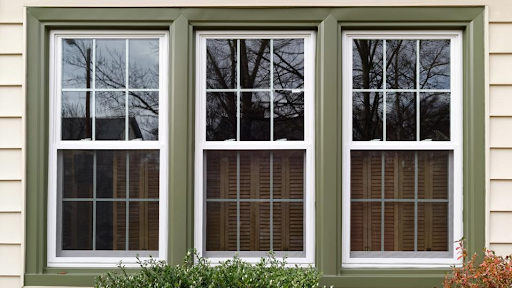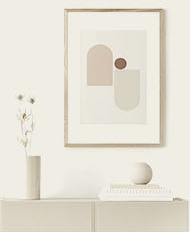
What is Sustainable Interior Design and How to Incorporate it in Your Home?
A native American proverb says, “We do not inherit the earth from our ancestors, we borrow it from our children.”
The above mentioned phrase highlights the importance of thinking about the future and being mindful of the resources we demand from nature. Speaking of the built environment, we must be thoughtful about how procurement and construction activities impact nature. Bringing more tangibility to this thought; did you know that “interior designing activities generate approximately 10.5 million tons of waste a year in the United States alone.” Thus, the concept of sustainable interior design is crucial for the modern world.
What is Sustainable Interior Design?
Source: Sustainable Jungle
Sustainable interior design and architecture focuses on creating spaces that are environmentally responsible and resource-efficient throughout their life cycle, from material selection to design, construction, and operation. If you are wondering why is sustainable interior design important; that’s because, this approach emphasizes the use of eco-friendly materials, energy-efficient systems, and waste reduction strategies.
5 Key Benefits of Sustainable interior Design
Source: Decorilla
By integrating sustainable interior design ideas designers contribute to the broader goal of sustainable development, reducing the overall impact on the planet. So, let’s explore the key advantages of sustainable interior design.
Environmental Conservation
Using sustainable interior design materials like reclaimed wood, recycled metals, and low-VOC paints, professionals can minimize resource depletion and reduce waste. These materials often require less energy to produce and generate fewer emissions, contributing to a lower carbon footprint.
Healthier Indoor Air Quality
Many conventional building materials and furnishings emit harmful chemicals and VOC (Volatile Organic Compounds, that can negatively impact health. Sustainability prioritizes the use of non-toxic, natural, and low-emission materials, ensuring cleaner indoor air. This can lead to improved respiratory health, reduced allergies, and overall enhanced well-being of people.
Energy and Bill Efficiency
Incorporating energy-efficient lighting, heating, and cooling systems, as well as maximizing natural light and ventilation can reduce energy consumption. This helps the environment and also translates into significant cost savings on utility bills.
Enhanced Comfort and Well-Being
Natural materials, ample daylight, and efficient spatial planning contribute to creating spaces that promote relaxation and productivity. Sustainable designs often incorporate elements of biophilic design, which connects occupants with nature through indoor plants, natural textures, and views of the outdoors.
Long-Term Durability and Value
Sustainable interior design emphasizes quality and durability, opting for materials and products that are built to last. This reduces the need for frequent replacements and renovations, leading to long-term cost savings and less environmental waste.
Top 7 Sustainable Interior Design Ideas for Your Home
Source: Neumann Monson Architects
The incorporation for sustainability in interior design can be achieved through a combination of passive and active design strategies. So, let’s have a look at the best sustainable interior design ideas for a home.
Use Natural Materials
Incorporate sustainable interior design materials like bamboo, terracotta, and rattan into your sustainable furnishings and decor. These add character while reducing the need for new resources.
Choose Low-VOC Paints
Volatile organic compounds (VOCs) in conventional paints can harm indoor air quality. Opt for low-VOC or VOC-free paints to ensure a healthier environment for your family.
Install Energy-Efficient Lighting
Replace traditional incandescent bulbs with LED or CFL lighting. These options use less energy and have a longer lifespan, reducing both your electricity bill and carbon footprint.
Invest in Energy-Efficient Appliances
Choose Energy Star-rated appliances for your kitchen and laundry room. They use less energy and water, contributing to significant savings over time.
Incorporate Natural Fibers
Use organic cotton, linen, and wool for your upholstery, curtains, and rugs. Natural fibers are biodegradable and often produced with fewer chemicals.
Biophilic Interior Design
Plants improve air quality by absorbing pollutants and releasing oxygen. They also add a touch of nature and tranquility to your home.
Optimize Natural Light
Maximize the use of natural light by arranging sustainable furniture to allow light flow and using light-colored window treatments. This reduces the need for artificial lighting during the day.
In Conclusion
An integral part of designing sustainable interiors is sourcing from sustainable interior design brands. So, here’s what you can do; start by researching companies that prioritize eco-friendly practices and materials. Look for certifications such as LEED, GreenGuard, or FSC, which indicate adherence to environmental standards. By selecting companies with strong environmental ethics, you can create a sustainable and responsible interior design that supports a healthier way of life.
If you are looking for sustainable interior design products, then you must check out the Archizy Shop.














